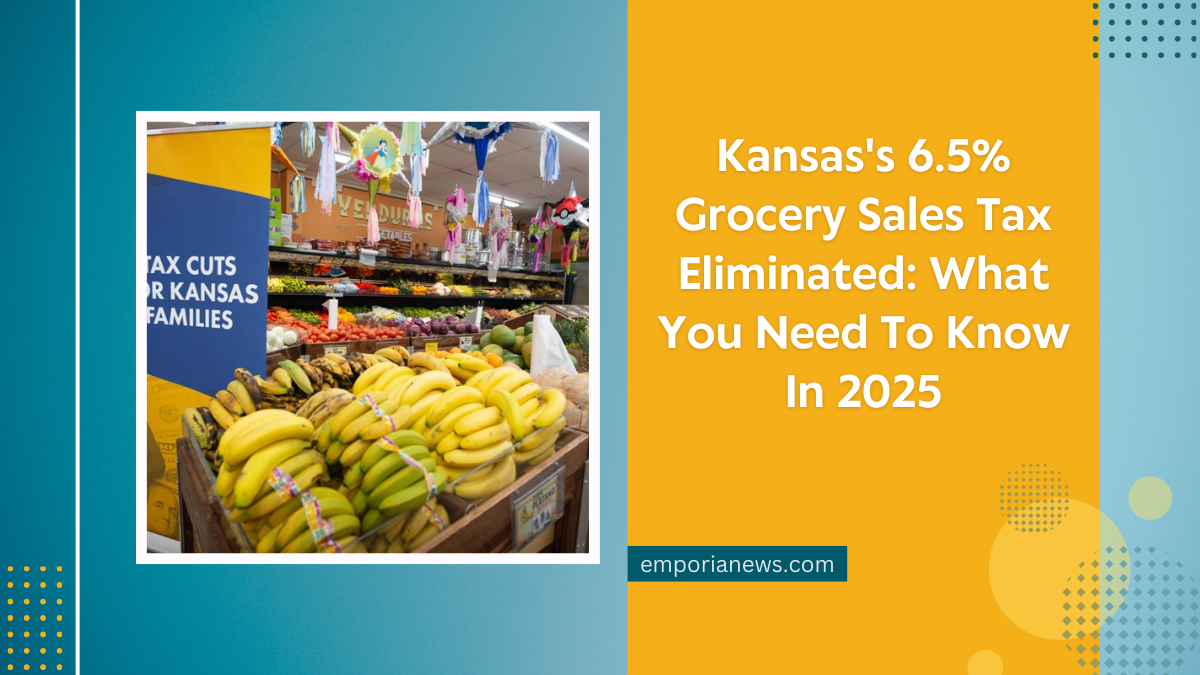Kansas has officially eliminated its state grocery sales tax as of January 1, 2025, marking a significant change for consumers and the state’s tax policy.
This move is part of a phased reduction plan that began in 2023, aiming to alleviate the financial burden on residents and stimulate economic activity.
Background of the Tax Elimination
In 2023, Kansas initiated a gradual reduction of the state-level sales tax on food, decreasing it to 4%. The plan further reduced the tax to 2% on January 1, 2024, and has now fully eliminated it as of January 1, 2025.
This phased approach was designed to allow both consumers and businesses to adjust to the changes incrementally.
Impact on Consumers
The elimination of the grocery sales tax is expected to provide financial relief to Kansas residents, particularly benefiting low- and middle-income families who spend a larger portion of their income on necessities.
By removing the 6.5% state sales tax on groceries, the average household could save a significant amount annually, making essential items more affordable.
Local Sales Taxes Remain
While the state has removed its portion of the sales tax on groceries, local jurisdictions in Kansas may still impose their own sales taxes.
For instance, cities and counties can apply additional taxes that will continue to affect the total price of groceries. Consumers should be aware of these local taxes, as the overall savings may vary depending on their location within the state.
Comparison with Other States
Kansas joins a growing list of states that have reduced or eliminated sales tax on groceries to ease the financial burden on residents.
For example, Oklahoma recently eliminated its 4.5% state tax on most grocery items, marking the largest tax cut in the state’s history.
Similarly, Illinois is set to end its grocery tax as part of the 2025 budget. These measures reflect a broader trend toward making essential goods more affordable across the United States.
| State | Previous Grocery Tax Rate | Year Eliminated | Local Taxes Applicable | Additional Notes |
|---|---|---|---|---|
| Kansas | 6.5% | 2025 | Yes | Phased reduction began in 2023 |
| Oklahoma | 4.5% | 2024 | Yes | Largest tax cut in state history |
| Illinois | 1% | 2025 | Yes | Part of the 2025 budget |
| Iowa | 0% | N/A | Yes | No state tax on most unprepared food |
Conclusion
The elimination of Kansas’s state sales tax on groceries represents a significant policy shift aimed at reducing living costs for residents.
While state-level taxes have been removed, local sales taxes may still apply, and consumers should remain informed about the total tax rates in their specific areas.
This change aligns Kansas with other states seeking to alleviate the financial burden on citizens by making essential goods more affordable.
FAQs
What items are considered groceries under the new tax policy?
Generally, unprepared food items such as dairy products, canned foods, and baby food are considered groceries and are exempt from the state sales tax. However, prepared foods like rotisserie chicken and hot deli items may still be subject to local sales taxes.
Do local sales taxes still apply to groceries in Kansas?
Yes, while the state sales tax on groceries has been eliminated, local jurisdictions may still impose their own sales taxes. The total tax rate on groceries will vary depending on the specific city or county.
How much can the average family expect to save with the elimination of the grocery sales tax?
The savings will vary based on individual spending habits, but the removal of the 6.5% state sales tax on groceries is expected to provide noticeable financial relief, especially for families with significant grocery expenses.
Are prescription medicines affected by this tax change?
No, prescription medicines were already exempt from state sales tax in Kansas and remain unaffected by this change.
How does Kansas’s new policy compare to neighboring states?
Kansas’s elimination of the state grocery sales tax aligns with actions taken by neighboring states like Oklahoma, which recently removed its 4.5% state tax on groceries. These measures reflect a regional trend toward reducing the tax burden on essential goods.




